Bentley Motors Limited /ˈbɛntli/ engineers is a British[11][12] multinational car manufacturer headquaterd in Crewe, England. It manufactures and distributes luxury automobiles and automobile parts worldwide. Bentley Motors Limited has been a wholly owned subsidiary of the GermanVolkswagen AG since 1998. W. O. Bentley founded his namesake company on 18 January 1919. Rolls-Royce purchased Bentley in 1931.
Bentley Motors Limited is the direct successor of Rolls-Royce Motors, which Volkswagen AG purchased in 1998. The purchase included the vehicle designs, model nameplates, production and administrative facilities, the Spirit of Ecstasy and Rolls-Royce grill shape trademarks, but not the rights to the use of the Rolls-Royce name or logo, which are owned by Rolls-Royce Holdings plc and were later licensed to BMW AG.
Bentley vehicles are sold via franchised dealers worldwide and as of November 2012, China is the largest individual market for Bentley automobiles.[13]
Contents
[hide]Cricklewood[edit]
Before World War I, Walter Owen Bentley had been in partnership with his brother Horace Millner Bentley selling French DFP cars, but he had always wanted to design and build his own range of cars bearing his name. In August 1919, Bentley Motors Ltd. was registered, and a chassis with dummy engine was exhibited at the London Motor Show in October of that year.[14] An innovative 4 valves per cylinder engine designed by ex–Royal Flying Corps officer Clive Gallop was built and running by December, and orders were taken for deliveries starting in June 1920; however, development took longer than estimated, and the first cars were not ready until September 1921.[14] Their durability earned widespread acclaim. Appearances were made in hill climbs and at Brooklands.[citation needed]
First major event - 1922 Indianapolis 500[edit]
Bentley entered the 1922 Indianapolis 500 mile race as their "first major event", sending one car with works driver Douglas Hawkes and riding mechanic H. S. "Bertie" Browning.[15] In a race dominated by specialized cars with Duesenberg racing chassis, Hawkes completed the full 500 miles in a modified road car, finishing 13th with an average speed of 74.95 mph after starting in 19th position.[16] The team was then rushed back to England to compete in the 1922 RAC Tourist Trophy.[15][17]
Performance at Le Mans[edit]
- 24 hours of Le Mans Grand Prix of Endurance
- 1923 4th (private entry)
- 1924 1st
- 1925 did not finish
- 1926 did not finish
- 1927 1st 15th 17th
- 1928 1st 5th
- 1929 1st 2nd 3rd 4th
- 1930 1st 2nd
Rolls-Royce stopped the racing programme.
It was on a visit to the DFP factory in 1913 that W.O. noticed an aluminium paperweight, and had the inspired idea of using the lightweight metal instead of cast iron to make engine pistons. The first Bentley aluminium pistons went into service in aero engines for the Sopwith Camel during World War I.
Barnato becomes chairman[edit]
Woolf Barnato acquired his first Bentley (a 3-litre) in 1925, just 12 months before he also acquired the business itself. With this car he won numerousBrooklands races. He was a member of a social set of wealthy British motorists known as the "Bentley Boys" who favoured the cars of W. O. Bentley. Many were independently wealthy, often with a background in military service. Barnato was nicknamed "Babe", in ironic deference to his heavyweight boxer's stature.
The Bentley enterprise was always underfunded, but inspired by the 1924 Le Mans win by John Duff and Frank Clement, Barnato agreed to finance Bentley's business. Barnato had incorporatedBaromans Ltd in 1922, which existed as his finance and investment vehicle. Via Baromans, Barnato initially invested in excess of £100,000, saving the business and its workforce. A financial reorganisation of the original Bentley company was carried out and all existing creditors paid off for £75,000. Existing shares were devalued from £1 each to just 1 shilling, or 5% or their original value. Barnato held 149,500 of the new shares giving him control of the company and he became chairman. Barnato injected further cash into the business: £35,000 secured by debenture in July 1927; £40,000 in 1928; £25,000 in 1929. With renewed financial input, W. O. Bentley was able to design another generation of cars.
The Bentley Boys[edit]
A group of wealthy British motorists known as the "Bentley Boys"—Woolf Barnato, Sir Henry "Tim" Birkin, steeplechaser George Duller, aviator Glen Kidston, automotive journalist S.C.H. "Sammy" Davis, and Dr Dudley Benjafield among them—kept the marque's reputation for high performance alive. Bentley, located at Cricklewood, north London, was noted for its four consecutive victories at the 24 Hours of Le Mans from 1927 to 1930.
In 1929, Birkin had developed the lightweight Blower Bentley, including five racing specials that started with the Brooklands racing designed Bentley Blower No.1.
In March 1930, during the Blue Train Races, Woolf Barnato raised the stakes on Rover and its Rover Light Six, having raced and beat Le Train Bleu for the first time, to better that record with his 6½-litre Bentley Speed Six on a bet of £100. He drove against the train from Cannes to Calais, then by ferry to Dover, and finally London, travelling on public highways, and won; the H.J. Mulliner–bodied formal saloon he drove during the race as well as a streamlined fastback "Sportsman Coupé" by Gurney Nutting—he took delivery of on 21 May 1930—became known as the "Blue Train Bentleys"; the latter is regularly mistaken for (or erroneously referred to) as being the car that raced the Blue Train, while in fact Barnato named it in memory of his race.[18][19]
Car models, Cricklewood[edit]
- 1921–29 3-litre
- 1926–30 4½-litre & "Blower Bentley"
- 1926–30 6½-litre
- 1928–30 6½-litre Speed Six
- 1930–31 8-litre
- 1931 4-litre
The original model was the 3-litre, but as customers put heavier bodies on the chassis, a larger 4½-litre model followed. Perhaps the most iconic model of the period is the 4½-litre "Blower Bentley", with its distinctive supercharger projecting forward from the bottom of the grille. Uncharacteristically fragile for a Bentley, it was not the racing workhorse the 6½-litre was. It became famous in popular media as the vehicle of choice of James Bond in the original novels, but this has been seen only briefly in the films. John Steed in the television series The Avengers drove a Bentley.
The new 8-litre was such a success that when Barnato's money seemed to run out in 1931 and Napier was planning to buy Bentley's business, Rolls-Royce purchased Bentley Motors to prevent competition for the market of their most expensive model, Phantom II.
Receivership, Sale to Rolls-Royce[edit]
The Wall Street Crash of 1929 affected the Bentley business greatly, with the Great Depression reducing demand for its expensive products. In July 1931, two mortgage payments on the firm that were guaranteed by Barnato fell due, and he advised the lenders that he was "unable to meet these debts". On 10 July, on the application of the mortgagee, the court appointed a Receiver to Bentley Motors Limited.[20]
The Press Association understands that Messrs Napier and Son, aero-engine builders, have reached an agreement to take over Bentley Motors Limited which is in voluntary liquidation. It is expected that the matter will come before the Court within the next few days.— Press Association, "Napier To Absorb Bentley Motors", The Times, Saturday, Oct 24, 1931; pg. 18; Issue 45962
Napier & Son negotiated with Bentley's receiver to buy the company, with the takeover expected to be made final in November 1931. Instead, a competitor named British Central Equitable Trust offered a counter-proposal at that time and outbid Napier in a sealed bid auction. British Central Equitable Trust later proved to be a front for Rolls-Royce Limited.[21] for the sum of £125,000.[22]
Barnato received around £42,000 in return for his shares in Bentley Motors, having bought a sizeable stake in Rolls-Royce not long before Bentley Motors was liquidated.[citation needed] By 1934 he was appointed to the board of the new Bentley Motors (1931) Ltd.[23]
This attempted total obliteration of Bentley Motors and its founder was one outcome of a highly personal "vendetta" between the two engineers, Hives and Bentley, two men of quite different natures, begun in 1914 when Bentley was made official liaison between Government and aero engine manufacturers.[citation needed] Bentley's abiding weaknesses were in sometimes poor personal relationships combined with his apparent inability to curb spending on development. The 8-Litre was acknowledged[by whom?] to be the better if more expensive car. Bentley may have been the better engineer.[citation needed] He accepted the position of patron of the Bentley Drivers' Club just before the end of Woolf Barnato's term as its president.
Rolls Royce ownership - Derby[edit]
Rolls-Royce acquired Bentley using an entity named the British Central Equitable Trust; not even Bentley himself knew the true identity of the purchaser until the deal was completed.[14] A new company, wholly owned by Rolls-Royce, was formed, Bentley Motors (1931) Ltd. The Cricklewood factory was closed and sold, and production stopped for two years,[24] before resuming at the Rolls-Royce works in Derby. Unhappy with his role at Rolls-Royce, when his contract expired at the end of April 1935 W. O. Bentley left to join Lagonda.
When the new Bentley 3½ litre appeared in 1933, it was a sporting variant of the Rolls-Royce 20/25, which disappointed some traditional customers yet was well received by many others. W. O. Bentley was reported as saying, "Taking all things into consideration, I would rather own this Bentley than any other car produced under that name".[14] Rolls-Royce's advertisements for the 3 ½ Litre called it "the silent sports car",[25] a slogan Rolls-Royce continued to use for Bentley cars until the 1950s.[26]
All Bentleys produced from 1931 to 2004 used inherited or shared Rolls-Royce chassis, and adapted Rolls-Royce engines, and are described by critics as badge-engineered Rolls-Royces.[27]
Car models, Derby[edit]
Crewe[edit]
After World War II, Rolls-Royce chose to focus its aero-engine production on Derby. Production of motorcars was moved to the ex-wartime shadow factory in Crewe, Cheshire.
Post-war standard-steel saloons[edit]
Until some time after World War II, most high-end motorcar manufacturers like Bentley and Rolls-Royce did not supply complete cars. They sold rolling chassis, near-complete from the instrument panel forward. Each chassis was delivered to the coachbuilder of the buyer's choice. The biggest specialist car dealerships had coachbuilders build standard designs for them which were held in stock awaiting potential buyers.
To meet post-war demand, particularly UK Government pressure to export and earn overseas currency, Rolls-Royce developed an all steel body using pressings made by Pressed Steel to create a "standard" ready-to-drive complete saloon car. Some years later, initially only for export, the Rolls-Royce Silver Dawn was introduced, a standard steel Bentley but with a Rolls-Royce radiator grille for a small extra charge, and this convention continued.
Chassis remained available to coachbuilders until the end of production of the Bentley S3, which was replaced by the chassis-less monocoque construction T series.
Bentley Continental[edit]
The Continental fastback coupé was produced principally for the domestic home market, the majority of cars produced (165, including a prototype) being right-hand drive. The chassis was produced at the Crewe factory and shared many components with the standard R type. Other than the R-Type standard steel saloon, R-Type Continentals were delivered as rolling chassis to the coachbuilder of choice. Coachwork for most of these cars was completed by H. J. Mulliner & Co. who mainly built them in fastback coupe form. Other coachwork came from Park Ward (London) who built six, later including a drophead coupe version. Franay (Paris) built five, Graber (Wichtrach, Switzerland) built three, one of them later altered by Köng (Basel, Switzerland), and Pininfarina made one. James Young (London) built in 1954 a Sports Saloon for the owner of James Young's, James Barclay.
The early R Type Continental has essentially the same engine as the standard R Type, but with modified carburation, induction and exhaust manifolds along with higher gear ratios.[28] After July 1954 the car was fitted with an engine, having now a larger bore of 94.62 mm (3.7 in) with a total displacement of 4,887 cc (4.9 L; 298.2 cu in). The compression ratio was raised to 7.25:1.
Car models, Crewe[edit]
| Bentleys made by Rolls-Royce Ltd. in Crewe | |||||||||
Vickers[edit]
The problems of Bentley's owner with Rolls-Royce aero engine development, the RB211, brought about the financial collapse of its business in 1970.
The motorcar division was made a separate business, Rolls-Royce Motors Limited, which remained independent until bought by Vickers plc in August 1980. By the 1970s and early 1980s Bentley sales had fallen badly; at one point less than 5% of combined production carried the Bentley badge.[14] Under Vickers, Bentley set about regaining its high-performance heritage, typified by the 1980 Mulsanne. Bentley's restored sporting image created a renewed interest in the name and Bentley sales as a proportion of output began to rise. By 1986 the Bentley:Rolls-Royce ratio had reached 40:60; by 1991 it achieved parity.[14]
Car models, Crewe Vickers[edit]
- 1984–95 Continental: convertible
- 1992–95 Continental Turbo
- 1980–92 Bentley Mulsanne
- 1984–88 Mulsanne L: limousine
- 1982–85 Mulsanne Turbo
- 1987–92 Mulsanne S
- 1984–92 Eight: basic model
- 1985–95 Turbo R: turbocharged performance version
- 1991–2002 Continental R: turbocharged 2-door model
- 1994–95 Continental S: intercooled
- 1996–2002 Continental T
- 1999–2003 Continental R Mulliner: performance model
- 1992–98 Brooklands: improved Eight
- 1996–98 Brooklands R: performance Brooklands
- 1994–95 Turbo S: limited-edition sports model
- 1995–97 New Turbo R: "updated" Turbo R
- 1995–2003 Azure: convertible Continental R
- 1996–2002 Continental T: short-wheelbase performance model
- 1997–98 Turbo RL: "new" Turbo R LWB (Long Wheel Base)
- 1997–98 Bentley Turbo RT: replacement for the Turbo RL
- 1997–98 RT Mulliner: Ultra exclusive performance model
Volkswagen[edit]
| This section does not cite any references or sources. (September 2010) |
Volkswagen AG vs. BMW AG[edit]
In October 1997, Vickers announced that it had decided to sell Rolls-Royce Motors. BMW AG seemed to be a logical purchaser because BMWh already supplied engines and other components for Bentley and Rolls-Royce branded cars and because of BMW and Vickers joint efforts in building aircraft engines. BMW made a final offer of £340m, but was outbid by Volkswagen AG, which offered £430m. Volkswagen AG acquired the vehicle designs, model nameplates, production and administrative facilities, the Spirit of Ecstasy and Rolls-Royce grill shape trademarks, but not the rights to the use of the Rolls-Royce name or logo, which are owned by Rolls-Royce Holdings plc. In 1998, BMW started supplying components for the new range of Rolls-Royce and Bentley cars - notably V8 engines for the Bentley Arnage and V12 engines for the Rolls-Royce Silver Seraph, however, the supply contract allowed BMW to terminate its supply deal with Rolls-Royce with 12 months' notice, which would not be enough time for Volkswagen to re-engineer the cars.
BMW paid Rolls-Royce plc £40m to license the Rolls-Royce name and logo. After negotiations, BMW and Volkswagen AG agreed that, from 1998 to 2002, BMW would continue to supply engines and components and would allow Volkswagen temporary use of the Rolls-Royce name and logo. All BMW engine supply ended in 2003 with the end of Silver Seraph production.
From 1 January 2003 forward, Volkswagen AG would be the sole provider of cars with the "Bentley" marque. BMW established a new legal entity, Rolls-Royce Motor Cars Limited, and constructed a newly built administrative headquarters and production facility for Rolls-Royce branded vehicles in Goodwood, West Sussex, England.
Car models, Crewe VW & BMW[edit]
- 1999–2002 Azure Mulliner—performance model
- 1999 Continental T Mulliner—firmer suspension
Modern Bentleys[edit]
After acquiring the business, Volkswagen spent GBP500 million (about USD845 million) to modernise the Crewe factory and increase production capacity.[29] As of early 2010, there are about 3,500 working at Crewe, compared with about 1,500 in 1998 before being taken over by Volkswagen.[30] It was reported that Volkswagen invested a total of nearly USD2 billion in Bentley and its revival.[31] As a result of upgrading facilities at Crewe the bodywork now arrives fully painted at the Crewe facility for final assembly, with the parts coming from Germany - similarly Rolls-Royce body shells are painted and shipped to the UK for assembly only.
In 2002, Bentley presented Queen Elizabeth II with an official State Limousine to celebrate her Golden Jubilee. In 2003, Bentley's two-door convertible, the Bentley Azure, ceased production, and Bentley introduced a second line, Bentley Continental GT, a large luxury coupé powered by a W12 enginebuilt in Crewe.
Demand had been so great that the factory at Crewe was unable to meet orders despite an installed capacity of approximately 9,500 vehicles per year; there was a waiting list of over a year for new cars to be delivered. Consequently, part of the production of the new Flying Spur, a four-door version of the Continental GT, was assigned to the Transparent Factory (Germany), where the Volkswagen Phaeton luxury car is also assembled. This arrangement ceased at the end of 2006 after around 1,000 cars, with all car production reverting to the Crewe plant.
In April 2005, Bentley confirmed plans to produce a four-seat convertible model—the Azure, derived from the Arnage Drophead Coupé prototype—at Crewe beginning in 2006. By the autumn of 2005, the convertible version of the successful Continental GT, the Continental GTC, was also presented. These two models were successfully launched in late 2006.
A limited run of a Zagato modified GT was also announced in March 2008, dubbed "GTZ".
A new version of the Bentley Continental was introduced at the 2009 Geneva Auto Show: The Continental Supersports. This new Bentley is a supercar combining extreme power with environmentally friendly FlexFuel technology, capable of using petrol (gasoline) and biofuel (E85 ethanol).
Bentley sales continued to increase, and in 2005 8,627 were sold worldwide, 3,654 in the United States. In 2007, the 10,000 cars-per-year threshold was broken for the first time with sales of 10,014. For 2007, a record profit of €155 million was also announced.[32] Bentley reported a sale of about 7,600 units in 2008.[33] However, its global sales plunged 50 percent to 4,616 vehicles in 2009 (with the U.S. deliveries dropped 49% to 1,433 vehicles) and it suffered an operating loss of €194 million, compared with an operating profit of €10 million in 2008.[29][34] As a result of the slump in sales, production at Crewe was shut down during March and April 2009.[35] Though vehicle sales increased by 11% to 5,117 in 2010, operating loss grew by 26% to €245 million.[36] In Autumn 2010, workers at Crewe staged a series of protests over proposal of compulsory work on Fridays and mandatory overtime during the week.[37]
Vehicle sales in 2011 rose 37% to 7,003 vehicles, with the new Continental GT accounting for over one-third of total sales. The current workforce is about 4,000 people.
The business earned a profit in 2011 after two years of losses as a result of the following sales results:[38]
Deliveries, profits and staff[edit]
| Year | Profit or loss
€ million
| Staff | Total
deliveries
| Americas | China | Europe
exc UK
| UK | Middle
East
| Asia
Pacific
| Other |
|---|---|---|---|---|---|---|---|---|---|---|
Sources Volkswagen AG Annual Reports and press releases[39]
Production[edit]
| Year | CGT Coupé | CGT Cabrio | Flying Spur | Mulsanne | Arnage | Brooklands | Azure | Continental | Other Bentley | Rolls-Royce | Total |
|---|---|---|---|---|---|---|---|---|---|---|---|
Sources Volkswagen AG Annual Reports[39]
Unsold cars. During the years 2011 and 2012 production exceeded deliveries by 1,187 cars which is estimated to have trebled inventory.
- 1998: Arnage saloon
- 1999: Hunaudieres Concept
- 2002: State Limousine
- 2003: Continental GT coupé
- 2005: Continental Flying Spur saloon
- 2006: Azure convertible
- 2006: Continental GT convertible
- 2007: Continental GT Speed coupé
- 2008: Bentley Brooklands coupé
- 2008: Bentley Continental Flying Spur (2005) Speed saloon
- 2009: Continental GTC Speed
- 2009: Azure T
- 2009: Arnage saloon, Final Series
- 2009: Continental Supersports
- 2009: Bentley Zagato GTZ[40]
- 2010: Bentley Mulsanne
- 2011: 2nd Generation Continental GT
References[edit]
- ^ Volkswagen AG 2012, p. 68.
- ^ a b Volkswagen AG 2012, p. 49.
- ^ Volkswagen AG 2012, p. 102.
- ^ a b Volkswagen AG 2012a, p. 120.
- ^ "vwagfy2012".
- ^ Volkswagen AG 2012a, p. 121.
- ^ Armistead, Louise. "Video: behind the scenes at the Bentley factory".
- ^ Volkswagen AG 2012, p. 19.
- ^ "Volkswagen Aktiengesellschaft Facts and Figures 2012" (PDF). volkswagenag.com. Volkswagen Aktiengesellschaft. 2012-06-11. 1058.809.453.20.Archived from the original on 2012-08-10. Retrieved 2012-08-10.
- ^ "Volkswagen Aktiengesellschaft Annual Report 2011"(PDF). volkswagenag.com (Volkswagen Aktiengesellschaft). 2012-03-12. 258.809.536.00. Archived from the original on 2012-08-08. Retrieved 2012-08-08.
- ^ Armistead, Louise. "Bentley boss on what's driving demand for luxury British cars".
- ^ Armistead, Louise. "Behind the scenes at the Bentley factory".
- ^ Einhorn, Bruce (5 April 2012). "The Surge in China's Auto Sales May Soon Slow". Bloomberg Businessweek.
- ^ a b c d e f Georgano, Nick, ed. (2000-10-01). Beaulieu Encyclopedia of the Automobile (Hardcover, Reprint ed.). Oxford, United Kingdom: Routledge. ISBN 1-57958-293-1.
- ^ a b Wagstaff, Ian (September 2010). "3: The Not-So-Roaring Twenties". The British at Indianapolis=. Dorchester, UK: Veloce Publishing. pp. .26–27. ISBN 978-1-845842-46-8. Retrieved 2013-10-11. "It was an event that was to prove a costly exercise for the Cricklewood-based company in sending both a professional driver and a mechanic with the car."
- ^ Davidson, Donald; Schaffer, Rick (2006). "Official Box Scores 1911-2006". Autocourse Official History of the Indianapolis 500. St. Paul, MN USA: MBI Publishing. p. 327.ISBN 1-905334-20-6. Retrieved 2013-10-09.
- ^ Davidson, Donald, Schaffer, Rick, Autocourse Official History of the Indianapolis 500, page 60
- ^ Melissen, Wouter (12 January 2004). "Bentley Speed Six 'Blue Train Special'". UltimateCarPage. Retrieved 4 November 2008.
- ^ Burgess-Wise, David (1 January 2006). "The Slippery Shape of Power". Auto Aficionado. Retrieved 4 November 2008.[dead link]
- ^ "Receiver Appointed Of Bentley Motors Limited Re Bentley Motors Limited; London Life Association Limited v. Bentley Motors Limited, And Woolf Barnato". The Times, Saturday, 11 Jul 1931; pg. 4; Issue 45872
- ^It was officially announced yesterday that the assets of the Bentley Motor Company have been taken over from the British Equitable Central Trust by Rolls-Royce who have under consideration the formation of a subsidiary company to deal with the matter. The service and repairs for the benefit of Bentley owners will be continued.
- —"Motor Trade Mergers". The Times, Saturday, 21 Nov 1931; pg. 19; Issue 45986.
- ^ Feast, Richard (2004). "When Barnato bought Bentley".The DNA of Bentley. St. Paul, MN: MotorBooks International. pp. 64–65. ISBN 978-0-7603-1946-8. Retrieved 26 March 2012.
- ^Captain Woolf Barnato has joined the board of Bentley Motors (1931) Limited. This appointment does not indicate any change in the company's policy of not engaging in motor racing.
- —"City News in Brief". The Times, Thursday, 8 Mar 1934; pg. 19; Issue 46697.
- ^ Finley, Ross (29 November 1985). "Luxury of the long-distance cruiser". Glasgow Herald. p. 21. Retrieved 5 April 2013.
- ^ Feast, Richard, The DNA of Bentley, Chapter 5 - Togetherness: Rolls-Royce/Bentley, p. 77
- ^ Stein, Ralph (1952). Sports Cars of the World. Scribner. p. 43. Retrieved 2013-09-29. "These, known as "the silent sports car," have been successfully marketed for almost twenty years now in various models."
- ^ Sewell, Brian (13 July 2004). "New Bentley is a drive in the wrong direction". The Independent (London). Retrieved 5 April 2013.
- ^ "Used Car test: Bentley Continental". Autocar 130 (3824): 47–48. 29 May 1969.
- ^ a b Cremer, Andreas (24 June 2010). "Volkswagen Said to Shuffle Porsche, Bentley Managers". BusinessWeek. Retrieved 25 June 2010.[dead link]
- ^ Gillies, Mark (10 May 2010). "Going Back in Time at the Bentley Factory". Car and Driver blog. Retrieved 25 June 2010.
- ^ Edmondson, Gail (6 December 2004). "VW Steals A Lead In Luxury". BusinessWeek. Retrieved 25 June 2010.
- ^ Garlick. "Bentley reports record profit". Retrieved 18 March 2008.
- ^ Reiter, Chris; Ramsey, Mike (15 December 2009)."Daimler Maybach Fails to Dent Rolls, Bentley Super-Luxury Lead". Bloomberg.
- ^ Cremer, Andreas (14 January 2010). "Volkswagen’s Bentley Targets U.S. Growth With Mulsanne Sedan".BusinessWeek. Retrieved 25 June 2010.[dead link]
- ^ Massey, Ray (23 January 2009). "Bentley announces seven-week production shutdown while Jaguar chief calls for Government aid". Daily Mail (London).
- ^ "Volkswagen AG 2010 Annual Report". Annualreport2010.volkswagenag.com. Retrieved 24 March 2012.
- ^ Cooke, Rhiannon (24 October 2010). "Bentley protests continue in Crewe over changes to working hours". Crewe Chronicle.
- ^ Rauwald, Christopher (4 January 2012). "Bentley Mulls Its Own SV". The Wall Street Journal. p. B3.
- ^ a b "Volkswagen AG 2012 Annual Report". Annualreport2012.volkswagenag.com. Retrieved 15 March 2013.
- ^ Ramsey, Jonathon (2009). "First Bentley Zagato GTZ available at $1.7M". autoblog.com. Retrieved 2 October 2010.
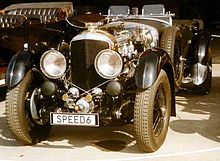

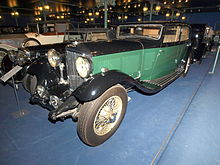
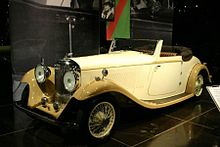

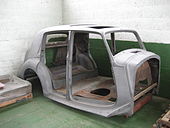






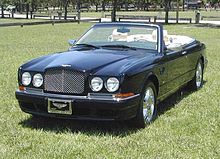

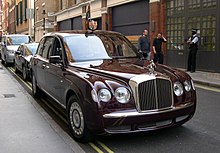



Geen opmerkingen:
Een reactie posten